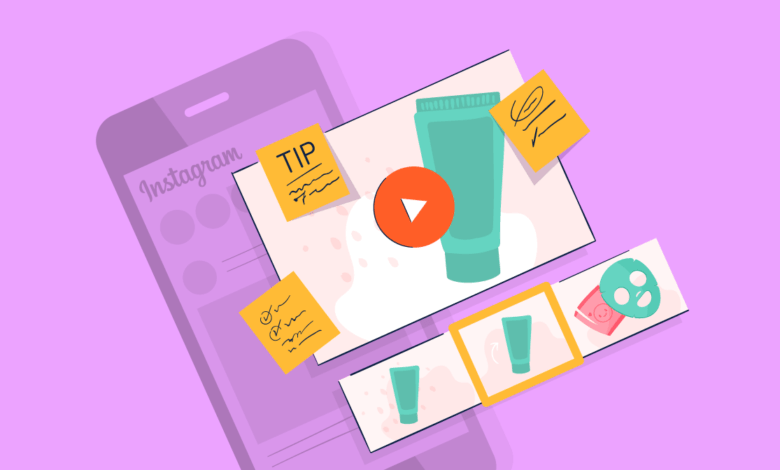Start Using These 10 Simple Social Media Optimisation Techniques Right Now

Start Using These 10 Simple Social Media Optimisation Techniques Right Now
When people search for items or services related to your business on social media, Google, Bing, and other search engines, SEO is the process of raising your website’s visibility.
What is search engine optimisation (SEO), and how does it work?
Search engines like Google and Bing use bots to scan the internet, move from site to site, collect information, and index it. Consider the index a large library where a librarian may help you find exactly what you’re looking for by picking up a book (or a web page).
The algorithms then analyse the sites in the index, using hundreds of ranking criteria or signals to determine the order they should show in search results for a given query. In our library analogy, the librarian has read every book in the library and can tell you which one will answer your queries.
Our SEO success factors can be considered proxies for user experience components. It’s how search bots decide if a website can give the information a searcher is looking for.
Because, unlike sponsored search ads, you can’t buy your way up the organic search rankings, SEO experts must put in the effort.
The factors are divided into six categories and weighted according to their total worth to SEO in our Periodic Table of SEO Factors. Content optimisation, for example, is dependent on quality content and keyword research, whereas site structure is primarily reliant on speed.
The newly redesigned SEO Periodic Table also includes a list of Toxins that detract from SEO recommended practices. These strategies or shortcuts may have sufficed to promise a high ranking when search engines’ algorithms were less sophisticated. For the time being, they might even work — at least until you’re caught.
The search engines are built to provide relevant, authoritative pages and a quick search experience for users. Optimising your site and content with these elements in mind can help your pages rank higher in search results.

In terms of marketing, what is the significance of SEO?
SEO is an integral part of digital marketing because people conduct trillions of searches each year, often with commercial intent to learn more about products and services. Frequent search benefits brands, which is aided by a variety of marketing methods. A higher search ranking may impact your revenue than your competitors.
However, search results have developed in recent years to provide users with more direct answers and information, which are more likely to keep them on the results page rather than sending them to other websites.
Remember that search results elements like rich results and knowledge panels can improve visibility and give users additional information about your company directly in the results.
To summarise, SEO is an integral part of a well-rounded marketing plan. Once you know what your website visitors desire, you can apply these skills to your paid and organic efforts, your website, and your social media assets, among other things.
Marketers should start with social media optimisation to get the most out of their social media efforts (SMO).
It’s not complex to figure out how to get the most out of your social media profiles and posts—no keyword research or technological skills is needed.
In this article, we’ll teach you how to apply easy social media optimisation methods to raise your brand’s social media visibility, increase engagement on your posts, and get your audience to tell you what they want.
Bonus: To help you design your own social media strategy quickly and efficiently, download a free social media strategy template. Please keep track of your results and explain your plan to your supervisor, coworkers, and clients with it.
When it comes to social media optimisation, it’s not about your overall social media strategy. It focuses on making your posts and profiles more effective.
The benefits of social media optimization:
Social Media Optimization creates compliance of customers to promote your business, transforming potential consumers into actual clients. These strategies will help you market your company on social media. It assists you in examining the market for growing and establishing your brand’s reputation, as well as producing awareness about your brand or organisation on these big social networking platforms.
Several major social media networks, including Google Plus, Pinterest, Facebook, and Twitter, are among the finest SMO Services in India. Hard work, continual research, and intelligent planning are required to optimize your business via social media. You’ll also need a mentor to advise you so that you don’t waste a lot of time and effort. This is why 3dcart offers a social media optimization beginner package that includes everything from setting up your Facebook store to social links, phone consultations, social bookmarking, evaluation reports, and more.
More Interaction with Customers
Having a strong social media presence can help you increase client contact. Setting up a booth at an event where your target market is likely to be present is similar. When you present your audience with fascinating and engaging content, they are more likely to contact you with questions, comments, and ideas.
Social media provides fantastic chances for you to learn more about your customers and for them to learn more about you. It’s also a fantastic place to start a real relationship with them and keep it going for a long time.
Greater Visibility
The higher your visibility on Twitter, Facebook, Instagram, and other social media networks, the more active you are. Your brand and online store will grow in popularity. This increases the possibility of your products and services being shared by word of mouth, especially if you produce visually engaging material. Of course, with this kind of exposure, you can also improve your search engine optimization.
Knowledge Distribution
When you have a big event coming up, publishing a notification on your website isn’t enough. If you use social media to spread the word, you’ll be able to notify existing customers and pass visitors about your company, events, and specials faster.
Suppose your store is mentioned in a popular publication, post about it. If you’re releasing a new product, make a post about it. Post about any incredible contests you’re running. All of these will not only capture your target audience’s attention but will also entice them to visit your store and make a purchase.
Enhancement of Customer Loyalty
You may use Facebook and other social media to make new friends and keep in touch with old ones, and you can do the same with present and potential clients. They can see you in the same light if you interact with them regularly on platforms where they frequently spend time with real loved ones. You can quickly acquire their confidence and, as a result, build and strengthen consumer loyalty.
Added Marketing Insight
When you take the time to read through your newsfeed, you’ll be astonished at how much you’ll discover about what people want and are looking for. It’s also a good idea to look at the profiles of those who are following you or who have liked your page.
Finding out that a lot of your Facebook friends enjoy drinking coffee or that a lot of your Twitter followers have babies that they frequently tweet about are fantastic marketing insights you can employ. Such information will help you decide how, where, and when to sell your products. These can also serve as a source of inspiration for new things to add to your store.
Customer Service Improvement
Have you ever tried contacting a business using social media? Maybe you’ve noticed a couple of comments on Instagram or Pinterest about a customer’s concern or issue. It’s because social media platforms give people a venue to voice their grievances, ask for aid, convey a source of the problem, and so on.
Being active on various social media platforms allows you to improve your customer service and, in the long run, persuade consumers to choose you over your competition.
There are 11 simple social media optimisation tactics you can start using right now.
A brand’s social media presence may appear seamless to the untrained eye. But, a lot is going on behind the scenes to ensure that social media is used to its full potential.
1. Post at the appropriate time
To be successful on social media, you must provide content that stimulates your audience and does it when they are most likely to participate.
It’s challenging to know when it’s optimal to post something on social media. To find this out for you, we’ve spent hours studying and analysing millions of social media posts. Tuesdays, Wednesdays, and Thursdays from 10:00 a.m. to 2:00 p.m.
It’s possible that what works for you and your audience aren’t the same.
Use an online scheduling tool with the best time to publish option (and post your social media material when your target audience is most likely to be online and engaged with what you’re serving up).

2. Your bios should be polished.
Your social media bio could be one of the first things a new visitor or potential lead sees when visiting your profile page. As a result, this must be as polished as possible. Always include the following information:
Who are you?
Your place of employment
What you’re doing
Topics that pique your attention
The tone of your brand
What is the best way for someone to contact you?
In your bio, you should also include a call to action (CTA) that urges readers to visit your website or a specific landing page.
Feel free to replace the link in your bio with your most recent content or a critical landing page to which you need to send visitors regularly.
3. Optimise your links with UTMs (Urchin Tracking Module)
A UTM code is a snippet of simple code that you may put to the end of a URL to track campaign and content performance. As previously said, links are typically used in social media optimisation to direct users to a webpage where they may continue their contact with the company. You must do so to bring traffic to your website, content, or landing pages.
Understanding how your audience interacts with the links you share necessitates link optimisation. You can discover which posts generate the most traffic from your connections by tracking your customers’ behaviour. By including UTMs in your social media channels and postings, you can track user behaviour quickly and easily.
4. Check to see if your photographs are of the right size.
Isn’t it the worst when you go to a social profile, and the images are terrible? Darling, the look of your brand is everything. As a result, make sure your photographs are professional-looking, polished, and, most importantly, the proper size.
Make sure your profile photo is a high-resolution image that isn’t unduly cropped, relates to your brand, and accurately portrays your organisation. Oh, and your profile images should be identical across your social media accounts. This will assist your audience in recognising your brand.

5. Post the appropriate amount.
You don’t want to post so infrequently that you lose your audience’s attention, but you also don’t want to post so infrequently that you fall off their radar. Finding your ideal social media posting schedule is critical for increasing brand engagement and conversations.
It’s important to remember that finding the appropriate posting place can take some time. Experiment with different cadences to see what works best for you.
6. Examine your social media plan.
Take a look at your current social media strategy and consider the following points:
- Are you meeting your aims and goals?
- Are your social media objectives still in line with your overall marketing plan?
- Are you posting the appropriate content? Images, videos, text-only, or a combination of all three? (Hint: you should strive for all three!)
- Is your content resonating with your readers?
Consider how your SMO will affect the points above positively (or occasionally negative). Social media optimisation (SMO) is the use of social media networks to manage and grow an organisation’s message and online presence. As a digital marketing approach, social media optimisation can raise awareness of new products and services, engage with customers, and decrease the risk of new products and services being harmful.
Most platforms include built-in statistics to assist you in understanding if your social strategy is working or not, so you may gain insider information on your company’s social performance. If you want to take things a step further, you can always do an A/B test your social media optimisation to see which method is more effective. A/B testing is one of the most fundamental types of social media testing.
An A/B test is a test in which one variable is changed while the others remain unchanged. For instance, if you want to find out which type of material on Instagram gets the most engagement, you may compare the photo and video content with the same caption or Story copy, posted at the same time on the same day of the week, one week apart. However, because there are so many factors in a single social post, such as time of day, media type, and so on, you’d have to experiment numerous times with varied content and variables to get conclusive findings.
You compare the test results against each other when you modify one variable in your postings, such as the content type.
For example, if you’re an online organic grocery store looking to raise awareness about food waste, which image will elicit the most engagement from your customers? Is it a picture of an overburdened landfill spewing methane emissions or a picture of a lower grocery bill?

7. Always keep your target audience in mind.
Not all audiences are created equal. Spend some time researching demographics to tailor your social media material to the relevant audiences.
For example, if you’re writing for an English audience, avoid using colloquial language from the United States. Similarly, if you’re aiming for an American audience, your social media text shouldn’t sound too British, guv’nor.
8. Make your accounts easier to find.
This strategy does not have to be used in every post because not every post needs to be found by a search engine. You may use social media to communicate with your audience at times. Always remember to plan. For example, when we share this content, we’ll use the hashtag “social media optimisation” to help others find it.
You can also get advice from your SEO professionals to determine the most crucial keywords for your company and include them in your social media posts to improve your organic ranking.

9. Make catchy headlines and captions.
Not everyone can write. Hire a copywriter or a social media expert to assist you in creating engaging headlines and captions that fulfil your goal. Keep in mind that a copy for Twitter may be pretty different than a copy for TikTok. Experiment with other phrases and terms to see which ones resonate the best with your target audience.
It’s critical to maintain consistency in your brand language across all your posts and captions and find the right balance between conversational and promotional language.
10. Add tags to your articles.
It’s best to practise tagging someone in your social media post if it promotes another brand or a customer. This will not only earn you a lot of kudos, but it will help natural conversation and communication on your article.
If your post contains user-generated content (UGC), a good rule of thumb is always to tag the person who created the original content.
Article Proofread & Published by Gauri Malhotra.




